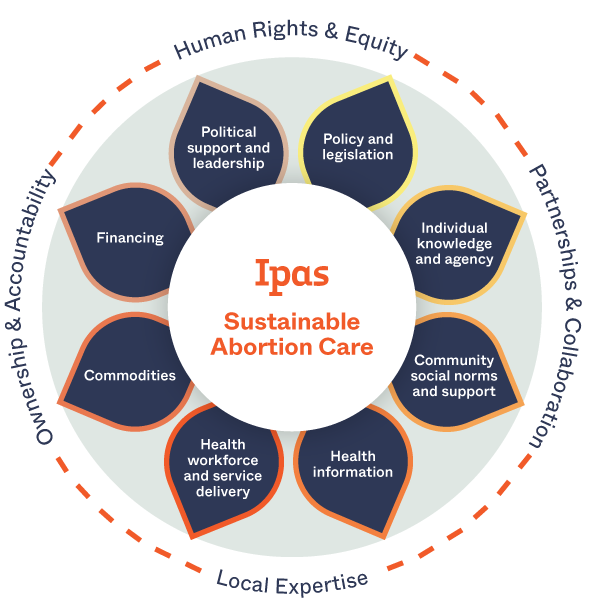Archives: Resources
This paper assesses women’s awareness of the liberalization of abortion law and their knowledge of a place for obtaining abortion services in Nepal. The data are from the 2011 Nepal Demographic and Health Survey. The results are compared with data from a similar survey conducted in 2006. The results suggest the need to intensify efforts to educate women in Nepal, particularly the most disadvantaged women, about abortion law, including the conditions under which abortion is permitted, and where to access safe abortion services.
Women’s knowledge of abortion law and availability of services in Nepal Conclusión. En México no existe correlación entre la elevada atención del parto en unidades médicas y la RMM, por lo que no sólo es necesario garantizar la atención universal …
Women’s knowledge of abortion law and availability of services in Nepal Resultados. En 2012, 31.2% de las adolescentes (15-19 años) había iniciado vida sexual; el uso del condón aumentó de 31.8 a 47.8% entre 2006 y 2012. El 47.9% de 30 a 34 años …
This report documents findings from a recent nationwide study of the incidence of induced abortion and severity of complications of unsafe abortion in Kenya. The study was conducted in 2012 among a nationally representative sample of Levels II to VI public and private health facilities. The Abortion Incidence Complications Methodology (AICM) and the Prospective Morbidity Methodology (PMM) were used as well-established and complementary approaches to estimate abortion incidence and the severity of unsafe abortion complications in Kenya.
CONTEXT: Abortion is legally restricted in Malawi, and no data are available on the incidence of the procedure. METHODS: The Abortion Incidence Complications Methodology was used to estimate levels of induced abortion in Malawi in 2009. Data on provision of postabortion care were collected from 166 public, nongovernmental and private health facilities, and estimates of the likelihood that women who have abortions experience complications and seek care were obtained from 56 key informants.
Ipas author response to VSI’s letter to the editor,Osur et al.’s Implementation of misoprostol for postabortion care in Kenya and Uganda: A qualitative evaluation
Taken together, the [NC] state Republican attacks on unemployment benefits, Medicaid, education, women’s rights and racial justice amount to what the rest of the world considers human rights violations.
Health care providers play a central role in the promotion and protection of human rights in patient care. Consequently, the World Medical Association, among others, has called on medical and nursing schools to incorporate human rights education into their training programs. This report describes the efforts of one Central American nongovernmental organization to include human rights–related content in reproductive health care provider training programs in Nicaragua and El Salvador. Evaluation findings suggest that exposure to educational materials and methodologies that emphasize the relationship between human rights and reproductive health may lead to changes in health care provider attitudes and behaviors that help promote and safeguard human rights in patient care.
La articulación entre el enfoque de Derechos Humanos (DH) y la muerte materna como una violación fundamental a los derechos básicos de las mujeres, es un enfoque reciente, innovador y con un gran potencial para promover, defender y garantizar la salud materna y los derechos reproductivos de todas las mujeres en México.
The nation’s top court is scheduled to meet Monday to review a constitutional challenge to the country’s abortion laws and to other policies that impede women’s access to a full range of human rights. A positive decision would mean that for the first time in 41 years, Bolivian women meeting certain conditions for an abortion would be free from criminal sanctions.
The study investigated whether women with etonogestrel implant placement in the immediate postabortion period have similar continuation rates to women with interval placement.The risk of discontinuation in women with postabortion placement was higher but not statistically different than women with interval placement (unadjusted hazard ratio 1.79, 95% confidence interval 0.81-3.96). For women who want a contraceptive implant after an abortion, immediate placement should be available.
La negativa por parte de profesionales de la salud a proporcionar servicios a los que se oponen por motivos morales o religiosos es una barrera significativa para el acceso de las mujeres a servicios de aborto seguro y otros servicios de salud reproductiva. Esta publicación contiene recomendaciones para promulgar leyes y reglamentos que salvaguarden el acceso de las mujeres a los servicios a la vez que protejan el derecho de cada profesional de la salud a la objeción de conciencia. Además, proporciona información sobre las normas de derechos humanos que abordan la negativa por parte de profesionales de la salud, así como una lista de recursos adicionales.
Where abortion is illegal, women suffer. Before 2002 when abortion was illegal in Nepal, women were imprisoned, half of all hospital admissions were due to complications from clandestine abortions, and hundreds of women died each year.
Download File Women’s knowledge of abortion law and availability of services in Nepal Las leyes no deben emplearse para asustar, avergonzar o encarcelar a una mujer por interrumpir su embarazo. Pero en algunos países, el aborto es considerado un …
Download File Women’s knowledge of abortion law and availability of services in Nepal Esta publicación es un diagnóstico de las Casas Maternas de Nicaragua—lugares donde las mujeres con embarazos de alto riesgo pueden obtener aceso a atención pre …
Download File Women’s knowledge of abortion law and availability of services in Nepal This publication provides an overview of the neglected sexual and reproductive health needs and rights of migrant, refugee and displaced women.
This publication provides an overview of the neglected sexual and reproductive health needs and rights of migrant, refugee and displaced women.
A systematic review of 25 studies, covering 346,000 women, to determine whether abortion care for adolescent and young women differs from abortion care for older women—with a focus on efficacy, safety and acceptability. It concludes that limited evidence indicates that abortion of all types at all gestational ages is effective, acceptable and safe for adolescents and young women, and strongly recommends offering adolescents a full range of contraceptives after abortion, including intrauterine contraception.
Download File Women’s knowledge of abortion law and availability of services in Nepal A systematic review of 25 studies, covering 346,000 women, to determine whether abortion care for adolescent and young women differs from abortion care for olde …
Download File Women’s knowledge of abortion law and availability of services in Nepal This resource is designed to help advocates and policymakers promote laws and policies that support access to safe abortion for young women. Parental involvemen …

